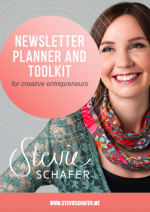Blogs are pretty much a staple in online content marketing. But, it doesn’t come naturally to many of us. So, I wanted to share with you how I personally approach writing blogs.
This isn’t definitive, but I know I find it useful when people share with me how they do stuff. It’s like it flips a switch in my head. So, I hope this guide flips a switch in yours.
How I approach writing a blog post! A non-definitive guide!
Step 1 – identify a broad topic
Personally, I start with my topic – something within the field of my business that I would like to write about. Because I find it easier to write to something I feel motivated to write about. It flows easier. It feels less like pulling teeth.
Pro tip:
Don’t know what to write about? Start with common questions clients or potential clients come to you with! How can you answer those questions in genuinely helpful and informative ways?
Step 2 – focus in on an issue your audience is having
Next, I like to find an angle. Angles are part of what can make a blog post interesting (that and your voice). An angle is simply a specific and or unique way to approach the topic you’ve chosen. For business blog posts, angles usually revolve around identifying a problem your audience is having and writing to that.
So, once you’ve worked out your broad topic, have a think about what issue do people have when it comes to this topic? What do they do? Do they sit at their desks frustrated about something? Do they procrastinate and avoid? What does the problem look and feel like for your audience?
For example, someone who is struggling to create a course or program might spend many hours googling what technology they should use and never actually make any progress on their content. They may feel overwhelmed, unfocused, and frustrated because there’s so much information out there, but they haven’t made any tangible progress on their own course or program.
Pro tip:
No one like being spoken down to. Empathise. Bring your reader in, but try to avoid speaking down to them. I try not to position myself as “the expert”, but rather as someone sharing something I think is helpful.
Step 3 – craft the first paragraph
Once I’ve identified an issue or problem my audience is having in that broad topic, so I’ve found an angle to work with, I then set about crafting the first paragraph.
The first sentence or two are some of the most important in your whole blog post. Many people will not read any further. When I’m writing my introductory sentences, my go-to is to focus in on a) identifying the audience’s issue and b) empathising with them. Because this attracts people who are feeling that thing and also shows them that I understand where they’re coming from.
So, with the example above, I might write something that really shows I understand their exact problem:
Trying to create your signature course or program? But every time you sit down at your computer with your “serious working pants on”, you end up lost down a Google rabbit hole? You start searching for answers to your many many questions: “What platform should I host my program on?” “How do I record videos?”. And before you know it, many hours have passed, you’ve read lots of stuff, but you haven’t actually made any progress on the content of your course. You’re frustrated that it’s taking so goddamn long. I get it. I cringe to think of the days (or weeks) I’ve lost down the Google rabbit hole.
Ideally, you’re trying to establish a relationship with your reader. That you get it. You understand their problem. Now, you’re probably afraid that if you get this specific – talking about their actions and their feelings – that you’re going to alienate way too many people. If you keep it broad, then it’ll appeal to more people.
The short answer is probably not. The trouble with not having a vivid opening is you run the risk of it being boring. And if it’s boring, people are more likely to stop reading, even if they think the information will be valuable to them. And here’s the kicker – if you have a vivid opening that resonates with your ideal reader, you are more likely to not only keep your ideal reader but probably others too. Heck, I read stuff that’s not targeted at me simply because it’s interesting. Don’t get sucked into the idea that you have to build a blog that has millions of readers. For business blogs, it’s more about building a relationship with your potential clients – not about wide readership.
Pro tip:
Spend a fair bit of time on this, but don’t feel like it needs to be “perfect”. I know I can spend ages trying to get something “just right”. Sometimes done is better than perfect.
Step 4 – start writing
Next, I just start writing. I’m sorry, when it comes to this section, my process is very very organic. I like to let the ideas flow out of my fingers and then rework and reshape it. I’m the kind of person who can think more clearly if I’m writing it out as I go.
But, I know not everyone is like that. So, if that’s too daunting to you, you can start with some subheadings. Brainstorming some subtopics or subheadings and then write to those.
When I’m writing, it’ll clarify what I want the Call To Action to be. It might be a content upgrade – e.g. some supplementary material to download or even just a suggestion for what people can do.
Pro tip:
Depending on whether you’re writing an epic “how to guide” on something or if you’re just answering one question in an informative way, keep your angle in mind. It’ll help you understand and deliver your content better.
Step 5 – tidying up
This is where I go back through my post and tidy the whole thing up. This includes reading it to make sure the angle is consistent and that it flows.
It’s at this point that I like to start thinking about my title and my subheadings. For my title, there are many things to think about, but often I’ll just jump over to Co-schedule’s free online headline analyzing tool to have a play with potential titles.
Now, if you want to give some thought to SEO, here’s where you can do it. An easy way to integrate SEO into your blog posts and you’re using WordPress.org (not .com), install the free plugin YOAST SEO.
And finally, after that, I craft my excerpt. In most of the WordPress websites I work with, the excerpts for blog posts are not only displayed prominently on the site, they are what Facebook will use as the teaser text. I will also often just grabs these excerpts for the newsletter too – for example having an image, the title of the blog post and the teaser text with a link to read it. So, the excerpt it kind of important.
And finally, after all that – a proofread is always a good idea. Reading it out loud yourself is a great idea. Getting someone else to read it is even better. If you’re really worried about spelling and grammar, try Grammarly’s free plugin to help pick up some common errors and refine your writing a little bit more. Grammarly can’t replace a proof-reader, but it’s better than just relying on yourself.
Pro tip:
Are writing and grammar not your strong point? Try batching a few blog posts and then sending them off to a proofreader. Just make sure you get someone who is familiar with blogging and content writing. A university student who isn’t used to content writing and blogging might try and make your content too formal, for example.
That’s my 5 step system
To recap, I identify a topic, focus in on a specific issue, craft an introduction, write the blog, and finally tidy up.
So, there you have it! An insight into how I approach writing blogs. This is definitely a non-definitive guide, but I hope you have gotten something out of it!
Image source: pixabay.com







